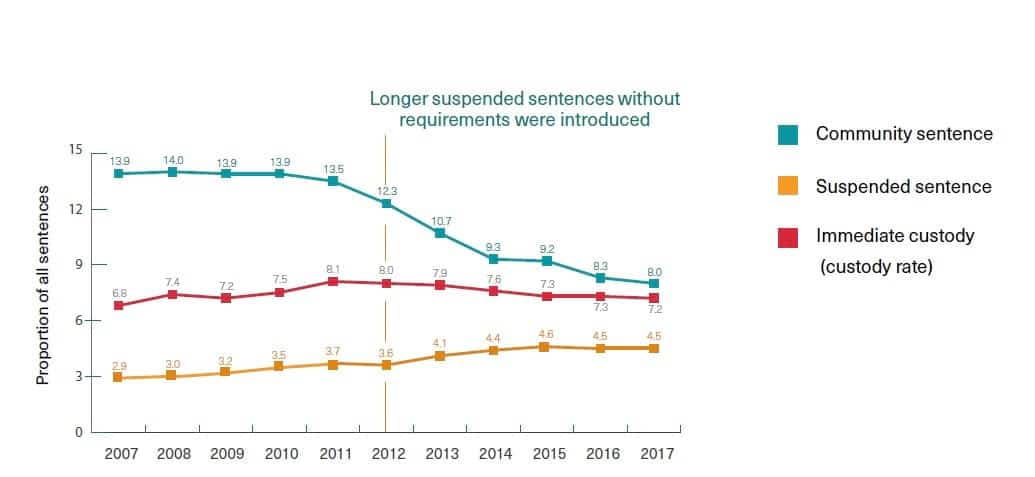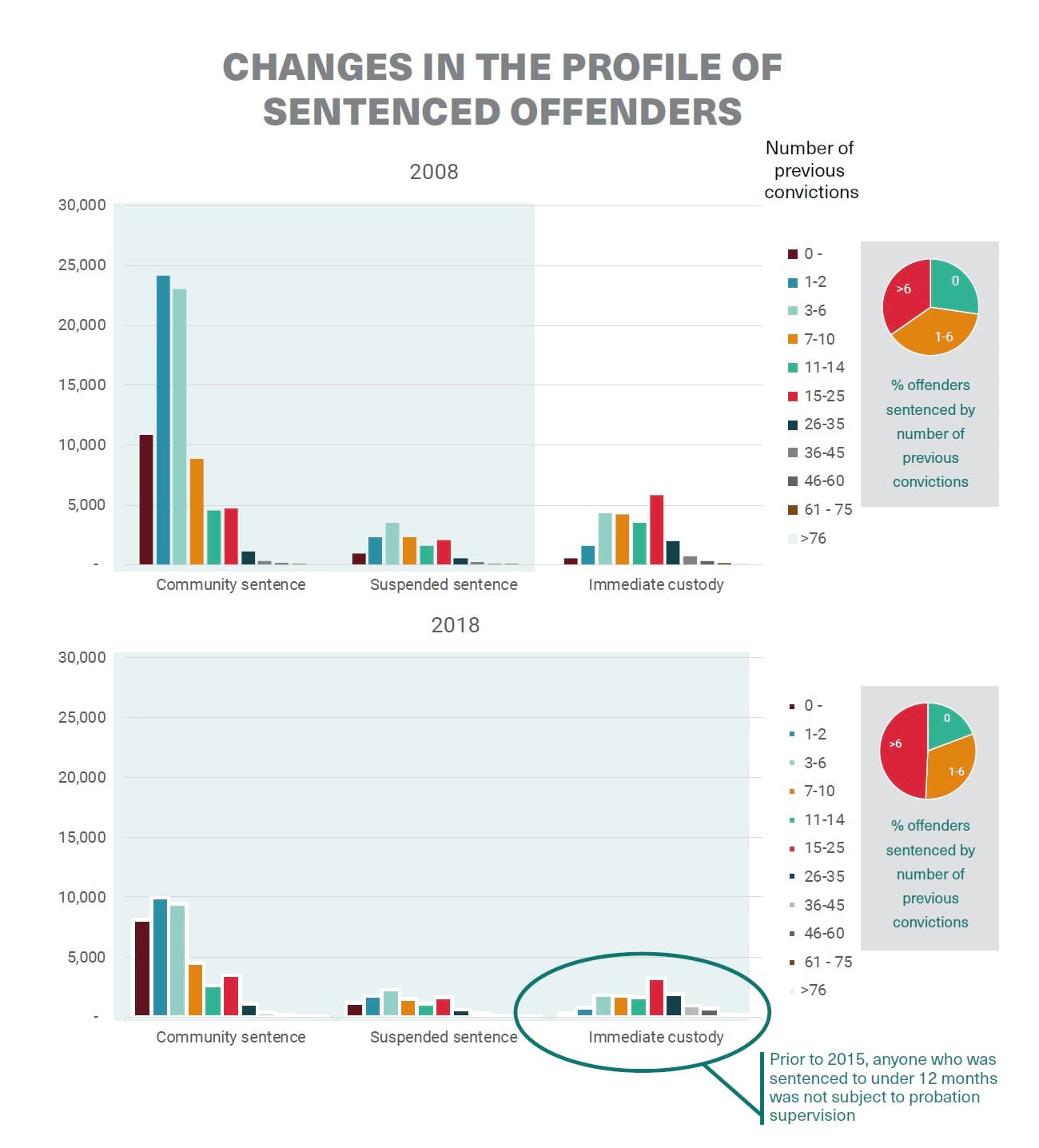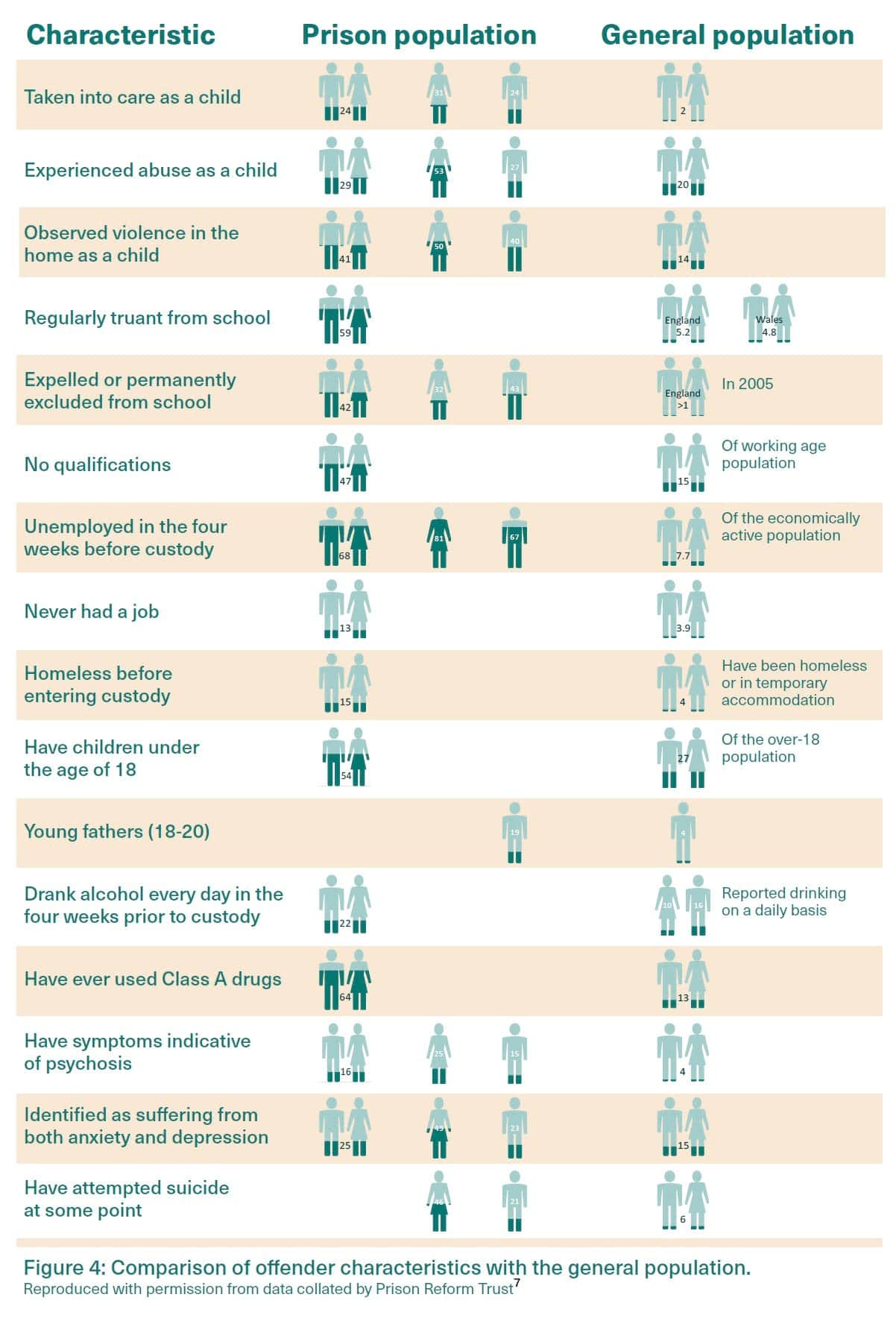Last Thursday (29 March 2019) Dame Glenys Stacey, published her final annual report before finishing her three year tenure as Chief Inspector of Probation.
In my coverage of the report, I noted that it included a detailed summary of the role and organisation of the probation service. In my opinion, the section makes sense for two main reasons:
- It provides an authoritative and up-to-date description of the work of probation; in itself an invaluable resource as anyone who has ever had to try to explain what probation is for to people from outside (or sometimes even inside) the criminal justice system is likely to agree.
- It gives a clear account of the significant changes which have taken place in probation over the last decade, both in terms of government expectations and the demographic and offending histories of those supervised by the service.
The section pulls together the latest data with specially commissioned graphics and summarises some of the most profound recent changes in a sentence:
More people are under probation supervision, more are prolific offenders often leading chaotic lives, and more have been convicted of a violent or sexual offence.
I promised to cover it in more detail. That’s the purpose of this blog post which presents 5 (to my mind) interesting facts and figures about the probation service in 2019.
1: Every month 16,000 new people start being supervised by the probation service.
Apologies for repeating the graphic below, but I think it is tremendously helpful. Every month, 7,000 people start new community orders, 3,000 start suspended sentences and 6,000 people are released from prison. In the same time period, about 2,000 people are recalled to prison.
2: The decline in community sentences
Community sentences continue to decline and suspended sentences have been increasing. Custody rates remain stable and average custodial sentence is continuing to increase. This is despite a decrease in the number of offenders being sentenced to immediate custody.
3: Probation now supervises a much higher proportion of prolific offenders
4: People supervised by probation have complex needs
When compared with the wider population, a much greater proportion of people under probation supervision have not had a fair start in life. Almost one in two will have experienced abuse as a child, with about one in four taken into care. Many were not loved or nurtured by their parents. For some, their childhood experiences lead to low self-esteem and self-respect.
Many people under probation supervision have no qualifications, and some have special educational needs. A disproportionate number have been expelled or excluded from school, have been unemployed or else never had a job.
A worrying number have become serious drug users or dependent on alcohol, or both, and many suffer with anxiety, depression, other mental health conditions (such as psychosis) or likely personality disorder. Almost one in two female and one in five male prisoners have attempted suicide at some point in their lives. In short, probation professionals are working with some of the most troubled and sometimes troublesome individuals in society.
5: There are almost as many people subject to MAPPA as are in prison
Under more formal arrangements known as Multi-Agency Public Protection Arrangements (MAPPA), agencies work together purposefully to track and manage the risks posed by violent and sexual offenders living in the community. MAPPA numbers (81,000) now almost match the entire prison population, driven mainly by the increasing numbers convicted of sexual offences.











